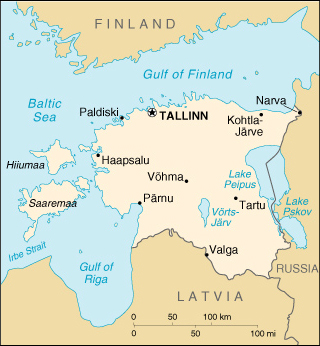
| Background |
After centuries of Swedish
and Russian rule, Estonia attained independence in 1918. Forcibly incorporated
into the USSR in 1940, it regained its freedom in 1991 with the collapse
of the Soviet Union. Since the last Russian troops left in 1994, Estonia
has been free to promote economic and political ties with Western Europe. |
| Government type |
parliamentary democracy |
| Capital |
Tallinn |
| Administrative divisions |
15 counties (maakonnad,
singular - maakond): Harjumaa (Tallinn), Hiiumaa (Kardla), Ida-Virumaa (Johvi),
Jarvamaa (Paide), Jogevamaa (Jogeva), Laanemaa (Haapsalu), Laane-Virumaa
(Rakvere), Parnumaa (Parnu), Polvamaa (Polva), Raplamaa (Rapla), Saaremaa
(Kuessaare), Tartumaa (Tartu), Valgamaa (Valga), Viljandimaa (Viljandi),
Vorumaa (Voru) |
| Legislative branch |
unicameral Parliament
or Riigikogu (101 seats; members are elected by popular vote to serve four-year
terms) |
